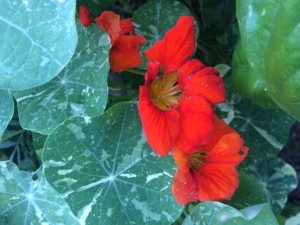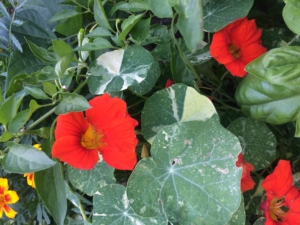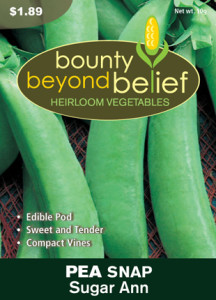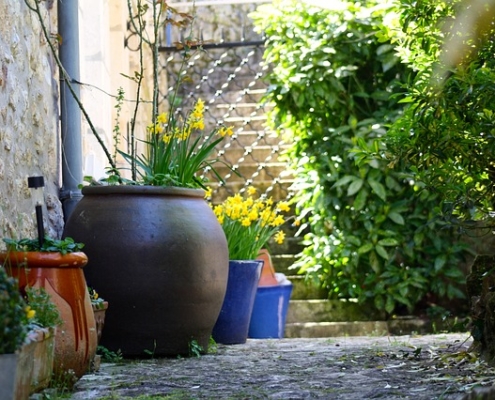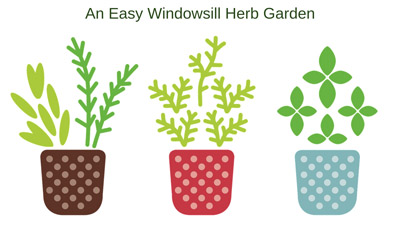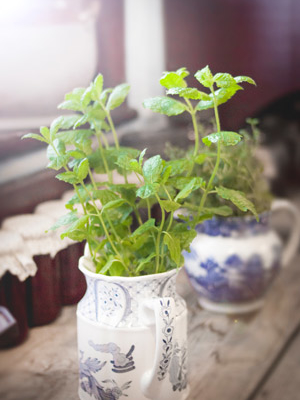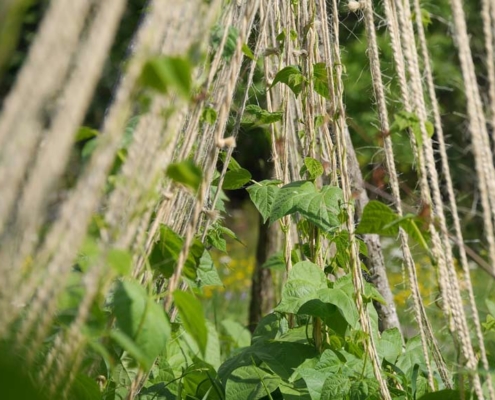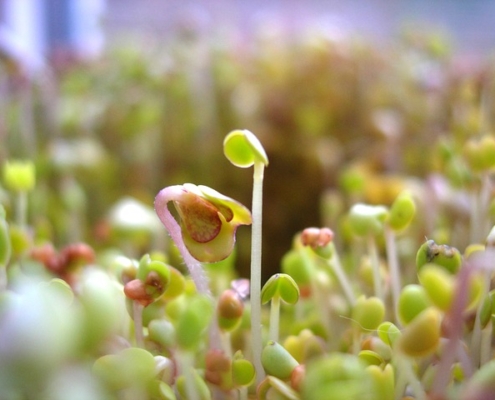Different Types of Radishes and How to Use Them
By Engrid Winslow
- There are two primary types of radish – one hails from Asia (the most common ones are daikon which is large and white) but there is also the large sweet and remarkably pink Watermelon Radish.

Watermelon radishes are delicious raw and can be substituted for a cracker in crudités and they also make a crunchy addition to stir-fries. They are often used in Chinese cuisines with fish dishes because it adds sweetness and counteracts fishy tastes.
2. Radishes are very easy to grow and can be sown in the garden as soon as the ground can be worked. Cover the seeds with about 2 inches of soil and thin them out once they sprout. They germinate quickly and all at once so, to keep them from getting overly large and fibrous, they should be sown multiple times throughout the season. They grow well in cooler temperatures which makes them a good spring and fall crop. One that is delicious cooked or raw is Cherry Bell.
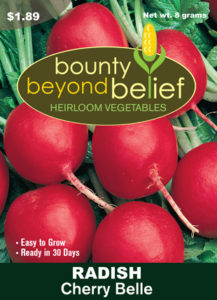
3. Do you want a taste of France in your radish? French Breakfast Radish is an heirloom variety dating back to the 1800s. It gets its name from a popular and delicious breakfast enjoyed throughout France. Want to give it a try? Just thinly slice the radishes lengthwise, grab a hunk of baguette and smear it with some sweet butter, top with radish slices and a sprinkle of salt. Close your eyes, take a bite and then say “Ooh, La, La!”
4. The White Icicle radish resembles small Japanese daikon but is sweet and tender. It is another heirloom variety that is easy to grow but is very versatile because it can tolerate warmer temperatures and grow well into summer weather.
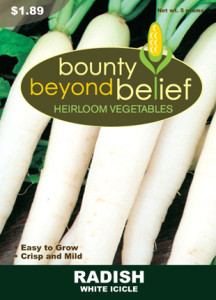
Relish the radish in this recipe:
APPLE RADISH SALAD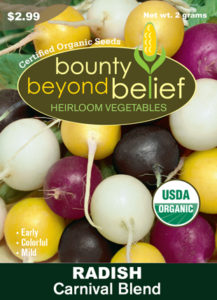
2 Granny Smith Apples
1 bunch sliced or julienned White Icicle radishes
Dressing:
Juice from one orange (lemon is also good here)
2 tsp honey
1 tsp Dijon mustard
1 tsp fresh thyme leaves
¼ cup olive oil
Salt and ground black pepper to taste
5. Want to really add some color to your fish or other tacos? Shred this colorful blend from the Carnival Blend radishes and pile it on with a squeeze of lime and some chipotle mayo. All radishes are good in slaw but this one gets bonus points for the interesting colors.
Or relish the radish in this version of a vegetarian radish taco where the radish is the star of the dish. This version is modified from superstar chef Anita Lo’s book Solo.
ROASTED AND PICKLED RADISH TACOS
Serves 4
3-4 bunches of radishes washed (reserve the tops and 10 of the smallest radishes for later)
1/3 cup olive oil
4 smallish tomatillos, husk removed, cut in half
3-4 small jalapenos, cut lengthwise with stems and seeds removed
1 tsp cumin
One small onion, sliced thinly
3 garlic cloves, smashed (reserve 1 for later use)
6 Tbs cider vinegar
2/3 cup water, divided in half
¼ tsp cinnamon
Juice of one lime
1 Tbs chopped cilantro
8-12 corn or flour tortillas
¾ cup queso fresco, crumbled
Extra lime wedges for serving with tacos
Preheat oven to 400 degrees. Place all but the reserved radishes, their tops, the olive oil, the tomatillo and half the jalapeno in a bowl and toss with salt and pepper. Remove the tomatillo and jalapeno and place them on one side of a roasting pan. Add the cumin and cinnamon to the bowl of radishes and toss again. Place radish mixture (except for the tops) on the other side of the roasting pan. Bake until softened, about 12-15 minutes.
Make radish pickles: Cut the reserved radishes in thin rounds and place them in a bowl with the rest of the jalapenos and the onion. In a small sauté pan bring the vinegar, 1/3 cup water and two of the smashed garlic cloves to a boil and pour over radish rounds. Set aside to cool to room temperature and drain.
When the roasting vegetables are soft, remove the tomatillo and jalapeno and blend with an immersion blender. Add tops of radishes to roasting pan and roast until wilted. Place the remaining third garlic clove in with the tomatillo, cilantro, lime juice, 1/3 cup water and blend to make a salsa.
Serve roasted radishes in warm tortillas garnished with salsa, pickled radishes and queso fresco. Serve with lime wedg1es.
https://bbbseed.com/product-category/store/heirloom-vegetable-seeds/
